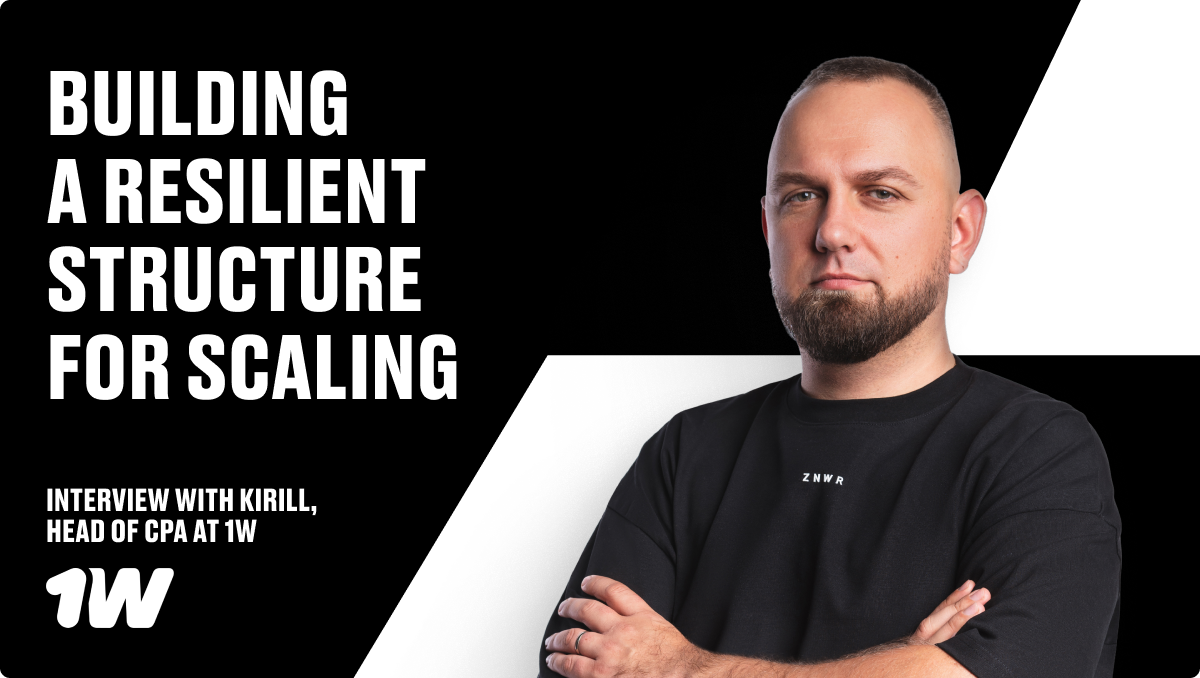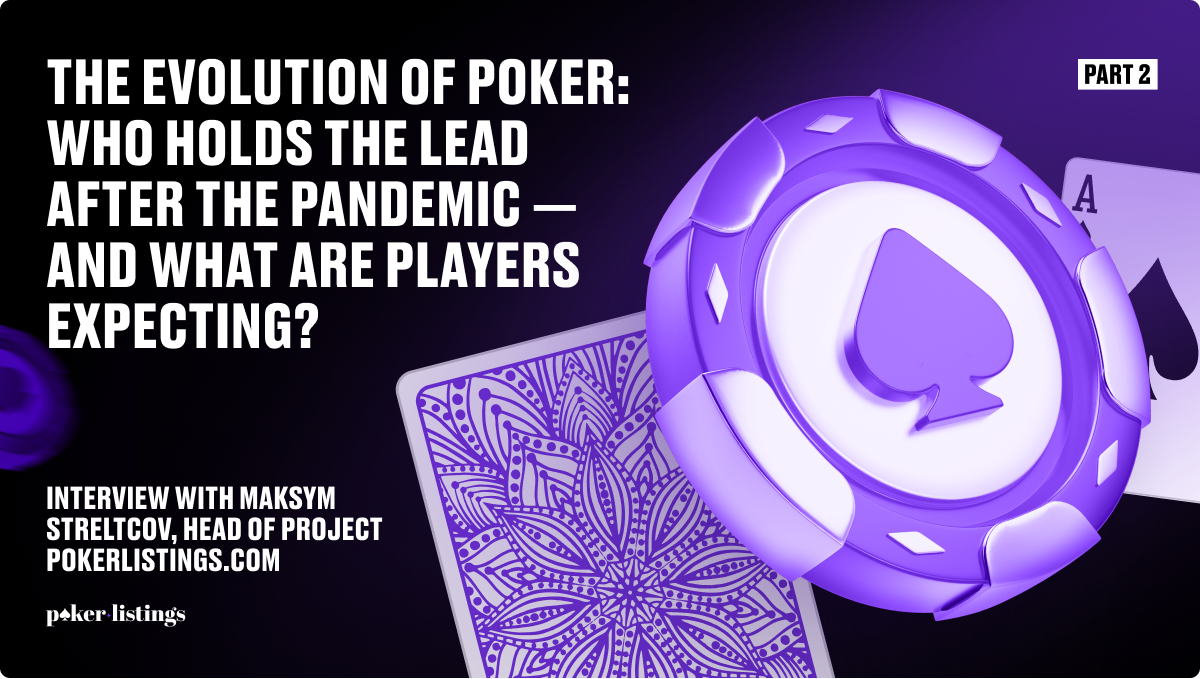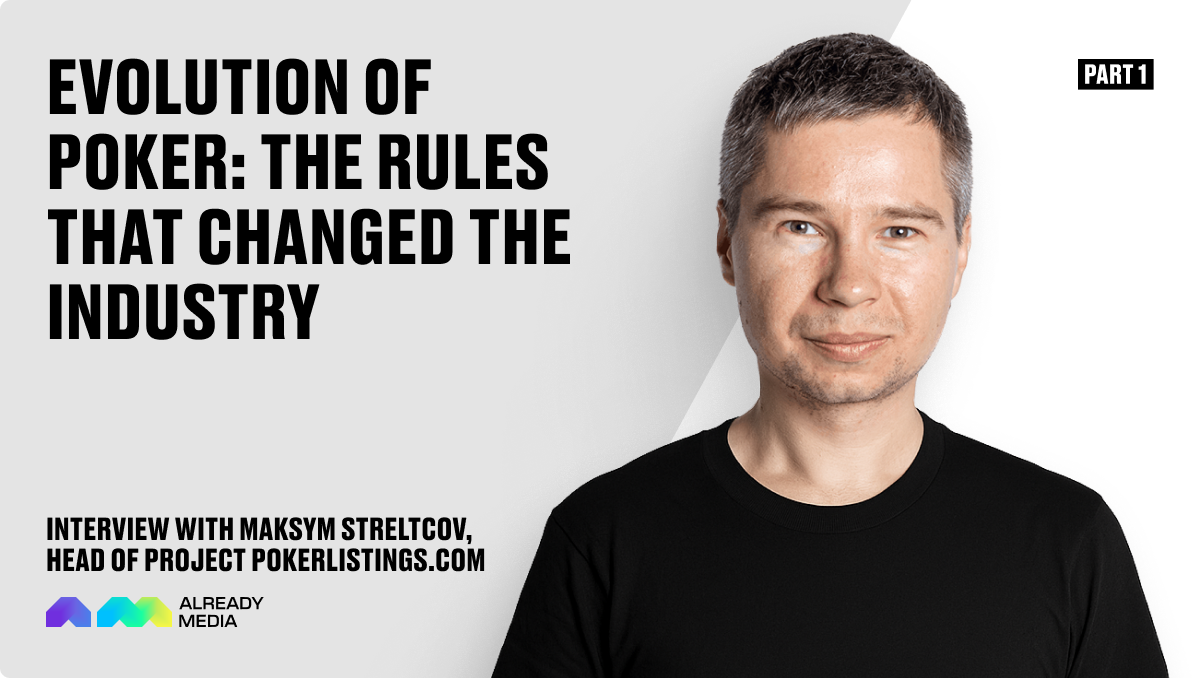
In this episode of Expert Talks, we spoke with Kirill, Head of CPA at 1w. This wasn’t a conversation about terminology or theory, it was about practice. How to grow a team, scale processes without losing efficiency, and manage a CPA division where everyone understands the market, the product, and the partner. It’s a story of systematic work built on trust, transparency, and the ability to learn on the move. This episode is about management where growth is not an accident, but the result of deliberate, precise decisions.
Kirill, let’s start from the beginning tell us how your journey in affiliate marketing began, and which stages you consider the most pivotal for your career?
I started as a media buyer in a dating holding the classic entry point into affiliate marketing. It was a school of speed and adaptation. My move into affiliate marketing came a bit later when I became an affiliate manager. That’s when I started building mutually beneficial partnerships instead of simply driving traffic. A major turning point was launching a CPA department from scratch no processes, no team-building experience. Through trial and error, we built a functioning system, developed a robust S2S platform, and scaled operations across several cities. The second strategic shift was joining 1w. Here, the challenge was different: not just to build a department, but to design a scalable system that could grow without sacrificing quality. It was at 1w that I moved from being a manager to becoming the architect of the CPA model.
The Structure of growth: Team, scale and talent
You lead the CPA direction at 1w. Could you tell us whether your responsibilities cover only CPA or also other partnership models? What does your current team structure look like, and how are responsibilities distributed?
I oversee both the CPA and hybrid models. The CPA division is structured into functional blocks, each led by a team lead. This setup ensures full coverage of all key processes and allows for a quick response to market changes. My role is to set goals and priorities at the team lead level they, in turn, communicate these to the managers, taking into account the specifics of each stream. We’ve clearly defined the areas of responsibility, which helps us maintain both efficiency and transparency in our team’s work.
What were the biggest challenges you faced while scaling the project? What required fundamental change in structure, people, or approach?
The main challenge during scaling was talent. There aren’t many highly qualified specialists on the market, and during rapid growth, it becomes especially difficult to find people who align with our principles and can integrate without compromising quality. We haven’t stopped looking for “stars” we’re still open to strong, experienced professionals. But in parallel, we’ve begun building an internal academy and started hiring candidates with potential: high motivation, strong communication skills, and a willingness to learn. This approach allows us to train people to meet our internal standards instead of adapting external experience to our model. As we grew, we also needed new management tools for quality control, analytics, and partner relations. That’s when we launched a dedicated internal unit that took over one of the key functions of the CPA department. This decision became a point of stability: even with increased workloads, we were able to maintain a high standard of work with our partners.
How is your internal team segmented? Do you assign managers by traffic sources, regions, partner types or do you adapt based on current goals?
We don’t have a strict division among managers. Each person has areas they feel more confident in, but I believe it’s crucial for every team member to understand different traffic sources and GEOs. They should be able to hold a conversation on any topic without redirecting a partner to another colleague or department. The team’s core mission is to achieve the goals set by the business.
How do you set hiring priorities do you look for experienced “stars,” develop talent in-house, or build a structure around specific markets and tasks?
I focus on growing strong specialists within the team. External stars, especially in junior roles, rarely deliver sustainable results they often require a long adaptation period to align with our processes and culture. It’s easier for us to train a strong player from scratch within our system. This approach takes time and investment in education, but it pays off in the long run. That said, we’ve also had cases where we built a dedicated structure for a specific market and adapted all our processes to fit but that’s a separate case with its own specifics.
Partnership as a System: The tandem of efficiency and analytics
What metrics and signals define “team efficiency” for you? How is the cycle built from partner acquisition to stable performance?
Team efficiency is defined first and foremost by results. At the same time, a healthy internal environment is just as important. When communication and processes within the team run smoothly, results inevitably follow. We measure efficiency using quantifiable key metrics: the number of new partners, reactivated partners, volume of acquired traffic, and of course, ROI. The goal isn’t just to buy traffic it’s to do it efficiently and convert it into revenue as quickly as possible. Right now, we have a clear system for working with partners from the first contact to scaling. Managers support partners at every stage, building long-term relationships. We’re also considering splitting these processes into stages to increase focus and improve results at each step.
How has the profile of an affiliate partner changed over the past year? What expectations have become especially important flexibility, speed, analytics, volume?
The market has matured significantly in recent times, and it’s evident across the board. More and more teams are entering with a focus on long-term collaboration rather than quick wins. For us, it’s essential that partners are oriented toward consistent cooperation, not just one-off campaigns. Effective partnership today is based on joint traffic management from quality analysis to funnel optimization and retention. Product-side analytics are important, but they must be complemented by deep partner-side analysis. Only this kind of collaboration enables real growth in 2025. Flexibility and decision-making speed are also critical. They’re necessary to act quickly when launching traffic, testing new GEOs, or experimenting with new funnels.
Channels, Data, Impact: How traffic is evolving
In your view, which traffic channels are losing relevance? And where do you see undervalued opportunities?
When it comes to CPA, it’s clear that conditionally free traffic and Facebook Ads have significantly declined. The reasons vary from stricter moderation and lower audience quality to growing operational risks. Today, these channels require too many resources for too little return, especially when aiming for sustainable scaling. At the same time, there are still areas that remain underestimated by the market. First, In-App traffic: it offers high engagement, flexible creative strategies, and strong LTV when managed properly. Native Ads are another example the initial hype may have passed, but partners who know how to build funnels through Taboola and Outbrain are still getting consistent, high-quality traffic. And of course, micro-influencers. Especially in local GEOs, they allow precise targeting, trust-building, and organic reach. It’s not always about volume, but it’s definitely about quality and long-term value.
Do you use behavioral analysis or AI tools when adapting offers and communicating with partners?
We deliberately avoid using AI as a primary tool in partner communications. Affiliate marketing is about trust, nuance, and real conversations. Even the most advanced AI still can’t replace an experienced affiliate manager someone who understands context, reads between the lines, and builds genuine relationships. That said, we do use AI to support affiliate managers internally helping optimize and speed up specific processes. But not as a direct communication tool.
Control and Trust: A Personal Management Insight
Finally your personal leadership insight from the past year: what worked even though you didn’t believe in it? Or the opposite what failed, despite seeming obvious?
I’ve always leaned toward a democratic management style. I genuinely believed that if you give the team clear goals and maximum freedom, they’ll find their own path. I gave space for initiative, set KPIs, and minimized control. But experience showed that even strong professionals can feel lost without structure, regular feedback, and clear benchmarks. Not because they’re unmotivated — but because uncertainty is demotivating. It’s important not to confuse structured work with micromanagement. The latter, especially at a leadership level, is a fast track to burnout and chaos. Now, I focus on building a clear process architecture within which the team has room for initiative. Strategy, order, and support that’s what allows people to truly thrive.
Scaling the CPA department at 1w isn’t a story of explosive growth it’s a story of consistent work with teams, structure, and quality. The interview with Kirill shows that long-term sustainability is only possible when every stage from hiring to analytics is built intentionally and backed by deep analysis. Clear processes, a focus on long-term partner relationships, and internal expertise make it possible not just to adapt to change, but to shape your own approach to the market. That’s the kind of leadership experience our guest shared today.

